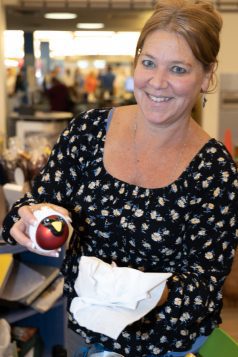Curriculum literature
I recently read a book about a boy in high school.
He had a supportive basketball coach who passed along quotes like “The quality of a man’s life is in direct proportion to his commitment to excellence, regardless of his chosen field or endeavor.”
He had a teacher that inspired him to do more with his life than previous generations. We should all want our children to achieve more than we have. This is a key part of the American dream. As such this book is patriotic in the best sense of the word.
There are too many inspiring role models in the boy’s life to list here.
This book provides a valuable perspective of a Native American who grew up on a reservation. A perspective that would be foreign to many of us if not for books like this one.
Some passages in the book are uncomfortable to read. Like a teacher admitting at one point the goal was to kill Native Americans; not literally but instead killing their culture. It’s uncomfortable, but unfortunately that is part of our history. Those that don’t learn from history are doomed to repeat it, and those that prevent history being taught fully intend to repeat it.
The title of this book is “The Absolutely True Diary of a Part-Time Indian” and the 11th-grade students at Ward Melville High School are lucky to have it as part of their curriculum.
Recently, some parents accused this book of being smut because of a few sentences referring to self-pleasure. Something not unique to this book and something most students are aware of by high school if not sooner.
It’s pretty clear that based on their objectives, the so-called Moms for Liberty and those associated with them are not truly for liberty. Instead, they should be called “Moms for Tyranny.” Their goal is to take away the freedoms of other people. Whether it’s an attempt to have a book removed or it’s an attempt to infringe on others civil liberties, it’s a level of tyranny that never should have left the dark ages.
A famous ship captain once said, “No one is so important that they can usurp the rights of another.” On that note, no one should ever infringe on a student’s liberty to read a great and patriotic work of literature as part of their curriculum.
Ian Farber
Setauket
How to pay for transit improvements

Here is how to pay for the transit initiatives outlined in last week’s editorial [“Interconnected trails: Local transit reimagined for Long Island,” Sept. 28, TBR News Media].
Federal funding is available to pay for Long Island Rail Road electrification of the Port Jefferson Branch. The project must be included in the Metropolitan Transportation Authority 2025-2044 20-Year Needs Assessment plan and upcoming 2025-2029 Five-Year Capital Plan.
The MTA must ask for and obtain permission from the Federal Transit Administration to enter this project in FTA’s Capital Investment Grant New Starts Core Capacity Program. MTA Chairman John “Janno” Lieber, LIRR Acting President Robert Free, U.S. Sens. Chuck Schumer [D-NY] and Kirsten Gillibrand [D-NY] along with the next Suffolk County executive must also be on board in support.
Apply for federal and state funding to purchase smaller buses and create new services. Suffolk County Transit was created in 1980 as a county-run oversight and funding agency for a group of private contract operators, which had previously provided such services on their own.
These companies manage the maintenance and operations of their buses. Buses are paid for by grants from the FTA with the 20% local share split between Suffolk County and state Department of Transportation. Both Suffolk County and NYSDOT provide operating assistance to cover shortfalls from farebox revenues.
Suffolk County Transit and Huntington Area Rapid Transit Bus both use FTA grants to pay for buses, paratransit vehicles, fareboxes, radio communication equipment, bus shelters, bus stop signs and other capital improvements required by private operators to continue providing safe and reliable service that riders count on. They can be used to pay for additional transportation service to serve residents, especially those who reside in low-density neighborhoods.
Operating subsidies are required to establish new service or increase the level of service and reduce the amount of time one waits for a bus on existing routes. Same for adding more off-peak, evening and weekend service. Many of the less dense towns will also have to step up and provide financial assistance to help pay for new services to communities with little or no bus service.
Funding for MTA or Suffolk County Transit is a four-way dance between what riders pay at the farebox and a combination of capital and operating assistance from Suffolk County, Albany and Washington via the FTA.
Everyone needs to have skin in the game. TANSTAAFL — “There ain’t no such thing as a free lunch” — or in this case, bus or train ride.
Larry Penner
Great Neck
The writer is a transportation analyst and former director for Federal Transit Administration Region 2
WRITE TO US … AND KEEP IT LOCAL
We welcome your letters, especially those responding to our local coverage, replying to other letter writers’ comments and speaking mainly to local themes. Letters should be no longer than 400 words and may be edited for length, libel, style, good taste and uncivil language. They will also be published on our website. We do not publish anonymous letters. Please include an address and phone number for confirmation. Scan the QR code above or email letters to [email protected] or mail them to TBR News Media, P.O. Box 707, Setauket, NY 11733


































